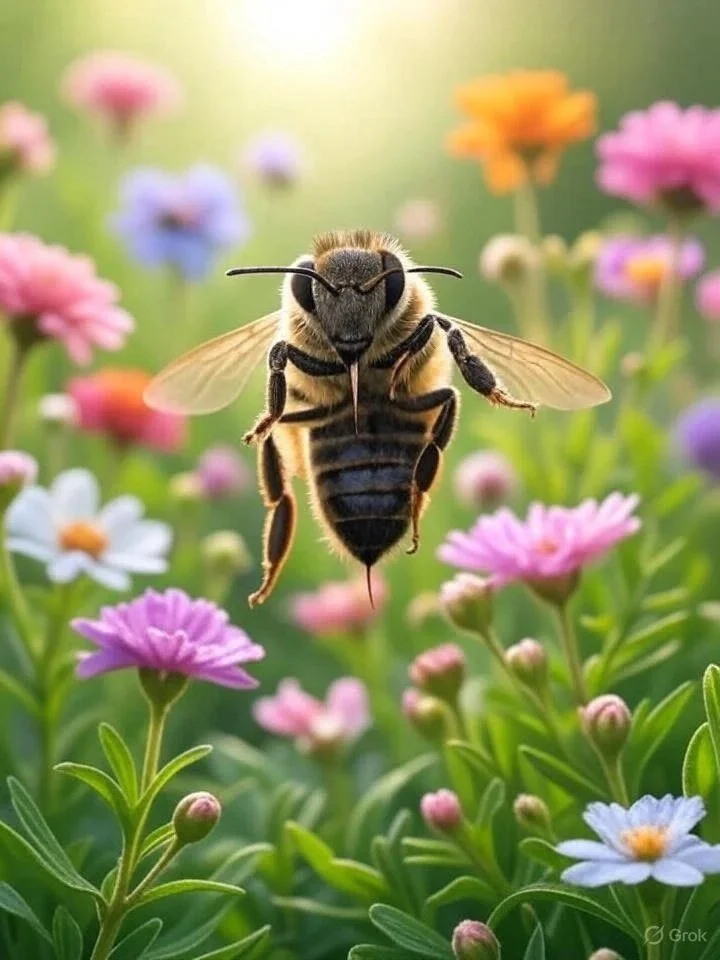Venom Allergy
With wasp levels across the UK reaching a record high this August, it's crucial to understand the risks associated with insect stings.
Stings from wasps and bees are the most common cause of severe allergic reactions (anaphylaxis) in the UK.
Here's what you need to know about diagnosis, management, and the definitive treatment available.
Understanding Your Reaction
It’s important to distinguish between different types of sting reactions. A normal reaction involves localised pain, redness, and swelling. A large local reaction is more extensive swelling around the sting site.
However, a systemic allergic reaction is a medical emergency that affects the whole body, often within minutes. Symptoms include widespread hives, swelling of the face or throat, difficulty breathing, dizziness, and a drop in blood pressure.
The Path to a Clear Diagnosis 🩺
If you've ever had a systemic reaction to a sting, a referral to an allergy specialist in a centre like ours at London Allergy Consultants is essential.
Our comprehensive evaluation includes:
A detailed discussion about your reaction history.
Allergy testing, using a combination of skin tests and specific IgE blood tests to confirm an allergy and identify the specific insect.
A baseline tryptase test. This simple blood test is recommended in international guidelines to check for any underlying conditions, like mast cell disorders, that could increase your risk of a severe reaction.
Management and Treatment
Emergency Plan
Immediate management for anyone with a confirmed venom allergy involves two key components: education on avoiding stings and carrying an adrenaline auto-injector (e.g., EpiPen®, Jext®) or Nasal Spray (Neffy) at all times.
The Definitive Solution: Venom Immunotherapy (VIT) ✅
The only treatment that targets the root cause of the allergy is Venom Immunotherapy (VIT). It's a life-changing option for those who have experienced a systemic reaction.
What is it? VIT is a highly effective treatment that desensitises your immune system through a course of injections containing purified venom.
How effective is it? It is one of the most successful treatments in allergy medicine, preventing severe reactions in up to 98% of patients.
The Process: In the UK, VIT typically involves an initial build-up phase followed by maintenance injections for a period of three years. It is considered very safe and is recommended by all major international allergy organisations.
While approaches to venom allergy care can vary, our clinic is committed to providing treatment that aligns with the highest international standards. We undertake VIT at the Evelina Children's Hospital (for NHS patients) and at the Allergy Centre of Excellence (for Private Patients). If you have concerns about a past insect sting reaction, contact us at the London Allergy Consultants for an expert assessment.
Frequently Asked Questions
-
Wasps and Bees Top the List of UK's Most Common Venomous Stingers
In the United Kingdom, stings from wasps and bees are by far the most common venomous encounters for the public. These insects are widespread throughout the country, particularly during the warmer months, leading to frequent interactions with humans. While most stings result in only localised pain and swelling, they are also the leading cause of serious allergic reactions, including anaphylaxis.
Wasps are often considered the most frequent source of stings, especially in late summer. Unlike bees, which typically sting only when provoked and can only sting once, wasps can be more aggressive and are capable of stinging multiple times. This increases the likelihood of being stung, particularly near their nests or when they are attracted to food and drink.
Following insects, the next most common, though significantly rarer, venomous stings come from marine life. In coastal areas, jellyfish such as the Lion's Mane and Compass jellyfish can deliver painful stings to swimmers and beachgoers. Additionally, the lesser-known weever fish, which buries itself in the sand in shallow waters, can inflict a very painful sting on those who accidentally step on its venomous dorsal spines.
The UK's only native venomous snake, the adder, is responsible for a relatively small number of venomous bites each year, estimated to be between 50 and 100 incidents in humans. Adders are shy creatures that typically only bite when they are trodden on or feel threatened. While an adder bite can be serious and requires medical attention, it is a far less common occurrence than an insect or marine sting. Hornets, while present in the UK and capable of delivering a painful sting, are less common than wasps and bees and therefore contribute to a smaller number of stinging incidents.
-
If you're stung by a wasp or bee, the first thing to do is move away calmly to avoid more stings. Most stings are painful but not dangerous.
## Immediate First Aid Steps
Wash the area with soap and water to keep it clean.
Apply a cold compress to the area for at least 10 minutes to reduce pain and swelling. You can use an ice pack wrapped in a tea towel or a cold, damp cloth.
Keep the affected area raised if possible to help reduce swelling.
Avoid scratching the area, as this can increase the risk of infection.
Take an over-the-counter painkiller, such as paracetamol or ibuprofen, if you're in pain. An antihistamine tablet or cream can also help reduce itching and swelling.
Apply local Anaesthetic Cream if you have this to hand
The most important intervention for venom allergy, especially in the context of systemic or anaphylactic reactions, is rapid administration of intramuscular epinephrine, as emphasized by the American Heart Association and the American College of Allergy, Asthma, and Immunology
## Dealing with a Bee Sting 🐝
Unlike wasps, honeybees leave their stinger and venom sac behind in the skin. It's important to remove this as quickly as possible.
Don't squeeze the stinger with your fingers or tweezers, as this can inject more venom.
Scrape the stinger out sideways using something with a hard edge, like a credit card, a long fingernail, or the blunt edge of a knife.
## When to Get Medical Help 🚑
You must get help immediately if you have signs of a serious allergic reaction (anaphylaxis).
Call 999 for an ambulance if the person has:
Difficulty breathing or wheezing
Swelling of the face, mouth, or throat
Feeling dizzy, faint, or confused
Nausea or vomiting
A widespread itchy rash (hives) that is spreading quickly
A fast heart rate
Contact your GP or call NHS 111 if:
The swelling or pain is severe and doesn't improve after a couple of days.
The sting area looks infected (e.g., there's pus, or the redness and pain are getting worse).
You've been stung in your mouth, throat, or near your eyes.
You've been stung multiple times (more than 10). text goes here
Worried About Allergies? Let’s Help You Get Answers
If your child is showing signs of a food, pollen, or skin allergy, early diagnosis is key. At London Allergy Consultants, our expert team provides trusted, evidence-based care tailored to your child’s needs. From testing to treatment plans, we guide you every step of the way.
London Allergy Consultants
London Allergy Consultants is a leading UK centre for diagnosing and treating food and airborne allergies in children and young people.





